Fly Factory produces insect pate that "tastes like chicken"
Icelandic product design graduate Búi Bjarmar Aðalsteinsson has created a Fly Factory that breeds insect larvae for human consumption (+ slideshow).
Aðalsteinsson has produced pate and dessert using larvae bred in the factory, to explore how to make insects palatable to western consumers and alleviate potential food shortages in future.
"They taste like chicken," he says. "There is no distinct taste. It depends on how you spice them and how you prepare them." His favourite insect recipe is "the coconut-chocolate larvae dessert I just tried out," he adds. "The kids love it."

Aðalsteinsson was inspired by a 2013 report by the Food and Agriculture Organisation of the United Nations produced a report called Edible Insects, which investigates how insects could help alleviate shortages of food in future.
"We need to find new ways of growing food," says the report. "Insects offer a significant opportunity to merge traditional knowledge and modern science in both developed and developing countries."
The conceptual micro-factory feeds insects on food waste and recycles the nutrients they excrete as fertiliser."The larvae are given organic waste and become rich in fat and protein, which then can be harvested for human consumption," says Aðalsteinsson, who designed the factory as his graduation project at the Icelandic Academy of the Arts.
"The factory was designed so that it produces no waste and to make use of materials that would otherwise be disregarded and thrown away."
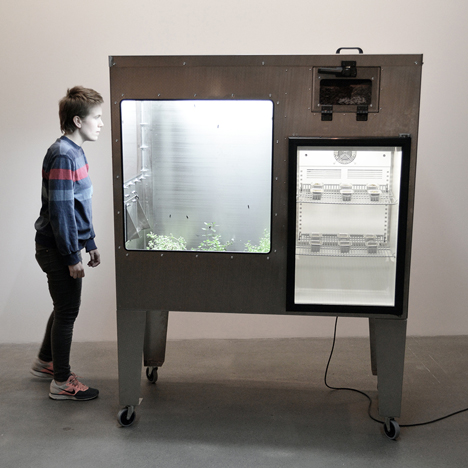
The steel factory is intended to be used by restaurants and the food processing industry rather than for home farming, since Aðalsteinsson does not believe people will want to breed insects at home.
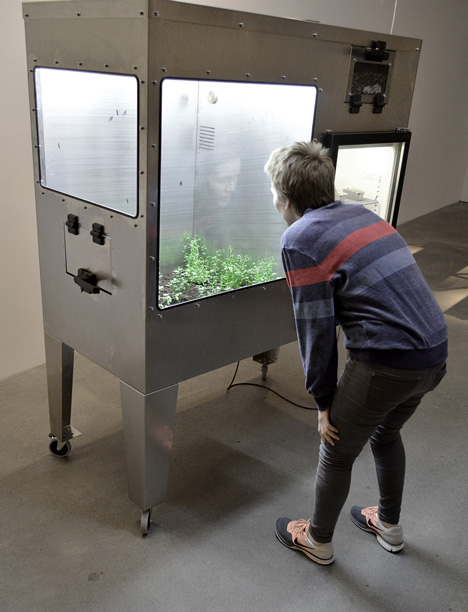
Aðalsteinsson is not the only designer exploring how to encourage humans to each insects, which could replace meat as a more sustainable source of protein. Last year, Vienna-based designer Katharina Unger proposed a domestic gadget to breed insect larvae for cooking, while earlier this year Irish graphic designer Lara Hanlon developed a digital resource encouraging people to eat insects.
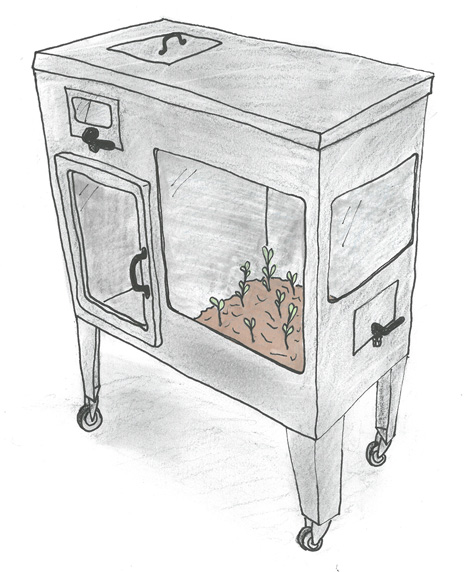
The Fly Factory features a breeding tank where insect larvae are fattened while the nutrients they excrete are harvested. "The larvae also produce a clean and nutrient-rich soil, which is subsequently drained into compost canisters and then used for spice and herb production," says Aðalsteinsson.
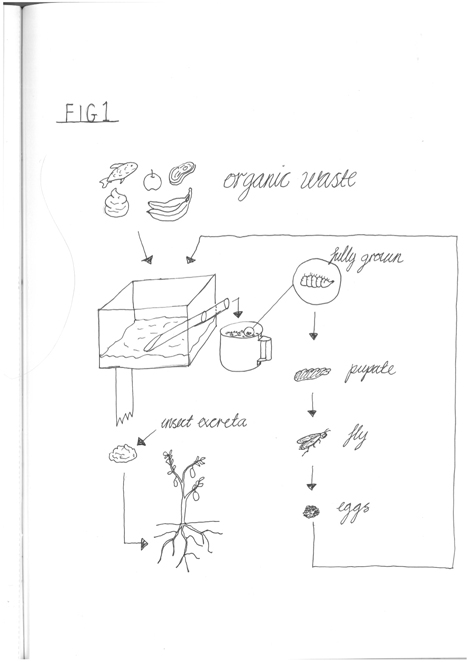
"The heat generated by the refrigerator that is used to store larvae and other ingredients will be employed as a thermal source to maintain the humidity and temperature of the flies' environment."
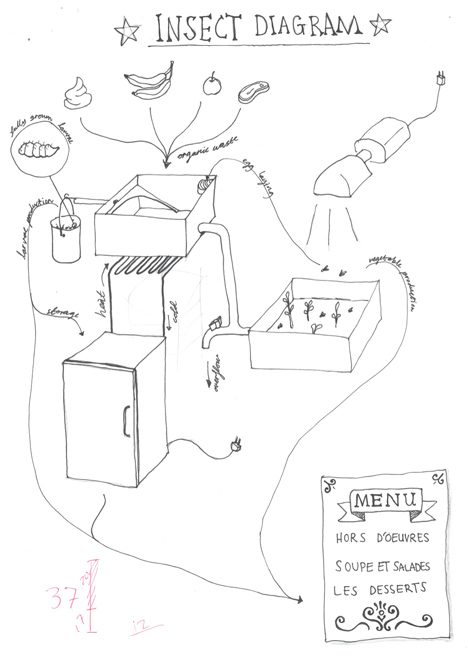
The factory breeds larvae of the black soldier fly, an insect that is regarded as more sanitary than other, disease-carrying flies since the adult fly has no mouth parts and does not seek food during its short life. Instead, it only seeks a mate.
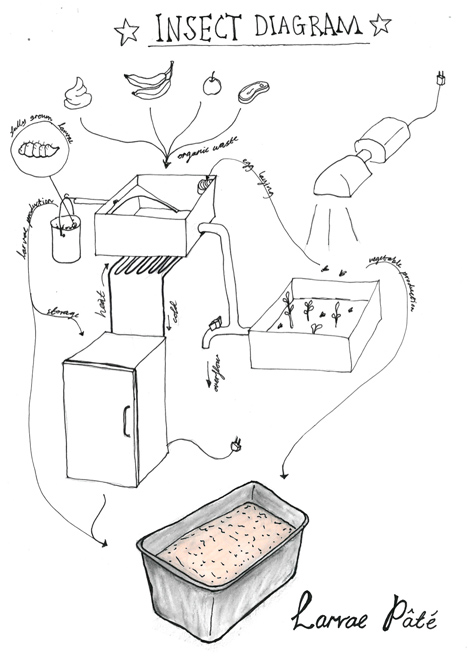
Their clean reputation means the black solider fly's larvae are used to sanitise compost and as animal feed, but Aðalsteinsson claims they could form the basis of a human diet.
"Insects can be an important resource in the search for eco-friendly methods of farming and producing protein-rich foods," says Aðalsteinsson, 25.
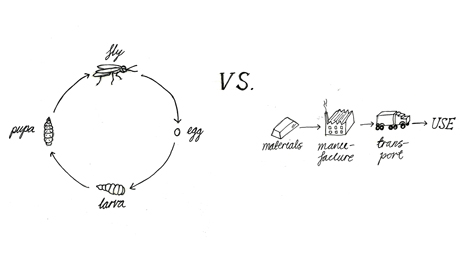
"Larvae are similar to meat when it comes to protein, fat and nutrients," he adds. "But larvae need 5 to 10 times less feed to produce the same amount of growth. Larvae, and insects in general, are also very resourceful when it comes to feeding, as they are able to digest almost any biomass available in the natural environment."
To test his design, Aðalsteinsson used larvae to produce a pâté and a pudding (see slideshow above). The project was developed under the supervision of head of product design Garðar Eyjólfsson and adjunct professor Thomas Pausz at the Icelandic Academy of the Arts.
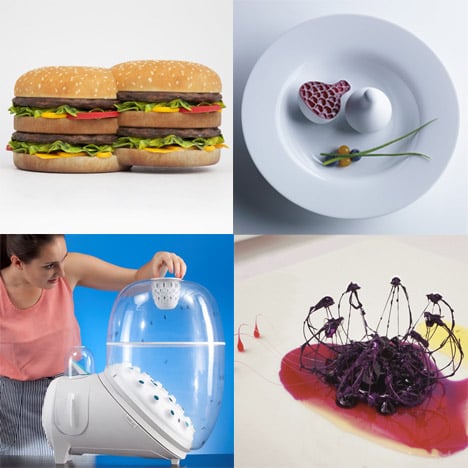
See our special feature about weird food.
Here's an edited transcript of the interview with Aðalsteinsson:
Marcus Fairs: Why did you decide to do this project?
Búi Bjarmar Aðalsteinsson: The inspiration came from an article published in a local newspaper. It said that if more people ate insects it would reduce hunger and pollution as well as provide better nutrition. I I found out there was a proposal from the Food and Agriculture Organization of the United Nations.
After reading its content I got excited about the necessity of finding more sustainable food sources. The biggest factor that makes insects super interesting is their abilities to transform almost any feed source into a very nutritious flesh.
Marcus Fairs: What has been the reaction to it so far?
Búi Bjarmar Aðalsteinsson: Some are very excited to taste it but others are not.
Marcus Fairs: What do the larvae taste like to eat?
They taste like chicken. There is no distinct taste. It depends on how you spice them and how you prepare them.
Marcus Fairs: What is your favourite fly larvae recipe?
Búi Bjarmar Aðalsteinsson: It's the coconut-chocolate larvae dessert I just tried out. The kids love it.
Marcus Fairs: How important could insects be for feeding humanity in future?
Búi Bjarmar Aðalsteinsson: Insects are not only important but rather a necessity if we are to keep on eating and demanding protein rich foods. As it turns out insects have very special capabilities that makes them suitable for farming purposes. First of all they eat almost anything organic and have some natural instincts that makes it easy to harvest without much work. Furthermore they need 5 to 10 times less feed then other meat production.
Marcus Fairs: People in the west don't like the thought of eating insects. How can this prejudice be overcome?
Búi Bjarmar Aðalsteinsson: The best way to introduce new kinds of food is to investigate local food culture. I started to come up with viable solutions to the integration of larvae production and Icelandic food culture. First I went to a local food specialist. We discussed how to influence food culture and how to change Icelanders views on insect eating. To make a long story short we decided upon two possible methods: one being some sort of fancy restaurant event and the other to produce some sort of produced foods in line with the western foods industry.
For a long time I could not choose between the two but finally I made some samples of processed larvae products. Two of those products made it to the final show, one being a larvae pâté and the other a larvae putting.
Marcus Fairs: Is your project a serious proposal, or is it intended to trigger a discussion about this issue?
Búi Bjarmar Aðalsteinsson: My proposal is serious. We have to drastically change the way we eat and produce food so that we can live harmoniously with the planet. I think insects are one step in the right direction and that step needs to be taken immediately.
Marcus Fairs: Why does your fly factory have an industrial aesthetic, rather than a domestic aesthetic?
I think food is highly dependent on trust and when you make new types of food you have to make people believe in it. May main inspiration is the industrial kitchen. They just look so robust and you really believe they will keep on working for a long time.
Another aspect of the aesthetics and the size is that I don't think that a majority of people are willing to grow their own food. Western society is dependent upon processed food and I am not about to change that with one project. So rather than fighting an existing culture I chose to embrace it and produce processed insect food. I envision my fly factory to be used in industrial settings inside restaurants or within the food industry. I think that insects do not need to be friendly rather they need to taste good and be affordable.